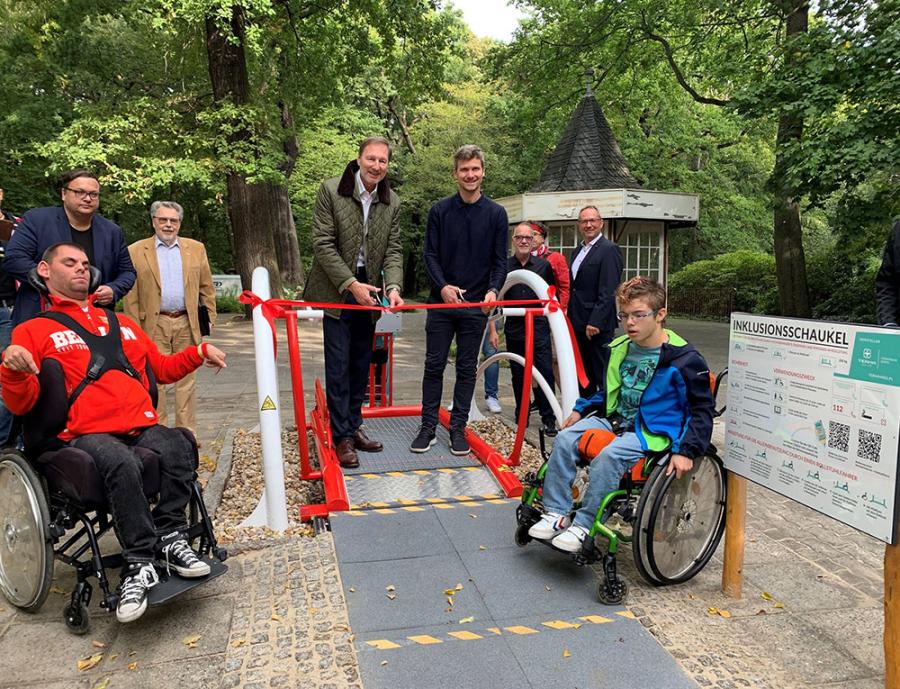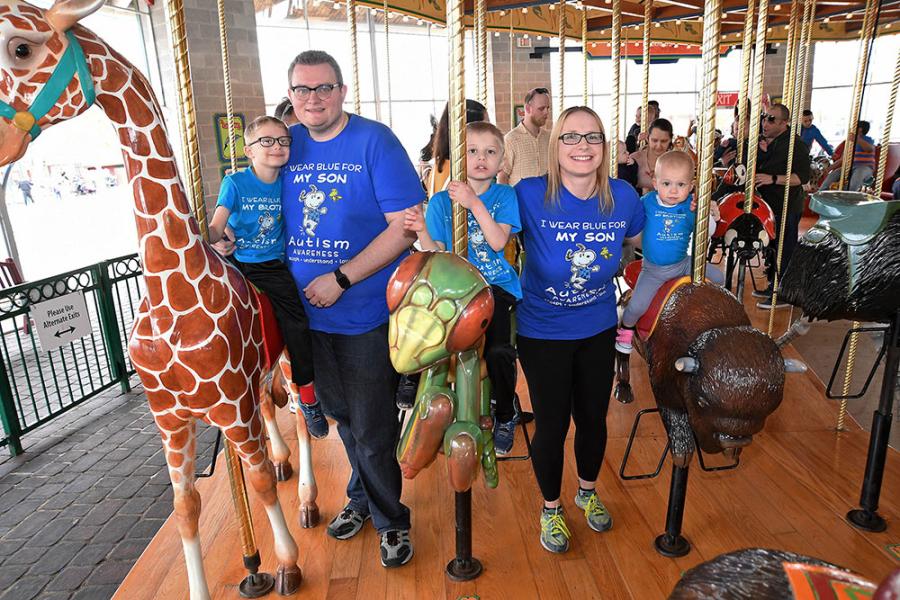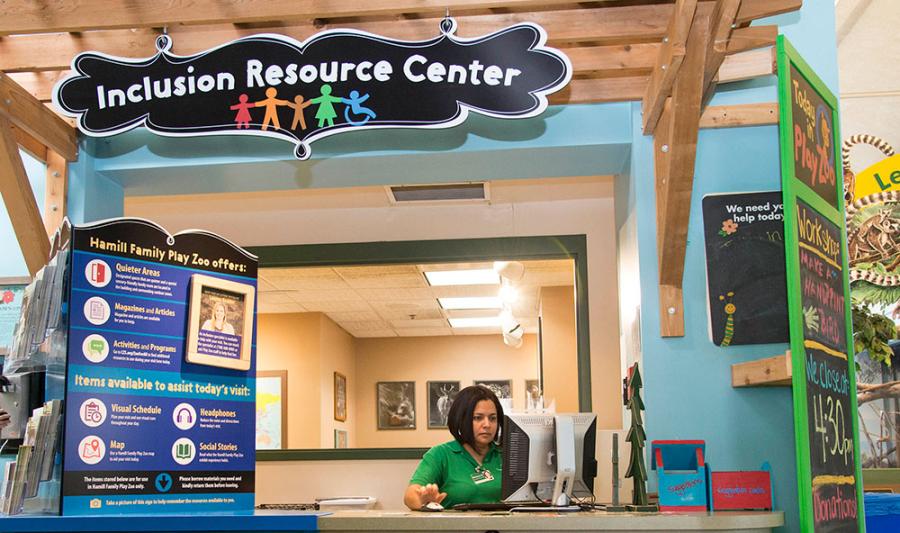You're Welcome!

According to the World Health Organization, over 1 billion people live with some form of disability. Numbers are increasing dramatically due to demographic trends, rises in chronic health conditions, and the pandemic. Many, if not most, people are likely to experience disability in their lives, so it’s good to see attractions, including zoos, scaling up disability inclusion and offering barrier-free access.
Zoos often provide accessible parking and shuttle services, free admission for caregivers, accessible toilets, complimentary interpretive services, and hearing loops. Many are looking beyond statutory requirements. Priority access passes, sensory-friendly resources, and guest assistance for tours and premium experiences are becoming increasingly common.
Breaking Down Barriers
Zoo Berlin and Tierpark Berlin in Germany offer a wide range of accessible activities and events that bring the animal kingdom to life for visitors with disabilities. Sensory tours at Tierpark Berlin let blind and visually impaired guests discover what a polar bear’s fur feels like and how howler monkeys sound. Zoo Berlin runs guided tours for people with dementia and German sign language tours. The zoos work with experts to tailor tours to guests’ needs.
“Barrier-free and barrier-reduced visitor experiences are very important to us,” says Zoo Berlin spokesperson Svenja Eisenbarth. This commitment extends to visitor routes, attractions, guest facilities, exhibit design, and education. “We are also working on providing barrier-free access to our website,” she says. For example, sign language tours are promoted via video rather than text.
Tierpark Berlin is completing an inclusion playground this summer. It includes a swing and a sand play table for wheelchair users, a sandbox with an upstand for sitting, wobble plates, and a safe and accessible rubber surface.
“We always make sure that our offers are available to as wide an audience as possible,” Eisenbarth says.

Partnerships for Progress
San Diego Zoo Safari Park in California, United States, embraces a collaborative approach. “Our focus is to make sure everyone feels welcome at our parks,” says Pat McTigue, deputy director and vice president.
San Diego Zoo Safari Park has partnered with KultureCity, a nonprofit organization promoting sensory accessibility. The park carries out continuous staff training to address challenges faced by guests with sensory needs. Visitors can download the KultureCity Sensory Inclusive App to get a social story (an illustrated story explaining what they can expect from their visit). San Diego Zoo Safari Park provides sensory bags, including fidget tools and noise-canceling headphones. It offers quiet zones and signposts loud spaces.
It has also worked with Options for All to employ individuals with intellectual and developmental disabilities. “This incredibly helpful partnership has allowed us to better understand this audience’s needs,” McTigue says.
Employees are encouraged to share experiences and propose solutions for accessibility and inclusion. “Our teams have devised, tested, and implemented more initiatives than we could have ever come up with on our own,” he says.
San Diego Zoo Safari Park recently hired a director of diversity, equity, and inclusion to further improve provisions for people with disabilities. “We have incorporated diversity, equity, inclusion, and accessibility (DEIA) into our Accessibility Committee to ensure we are exploring and working through accessibility needs beyond ADA (Americans with Disabilities Act) requirements,” McTigue says. The team regularly reviews standards to confirm they meet the community’s needs.
New Orleans-based Audubon Nature Institute partnered early on with KultureCity; Audubon Zoo and Audubon Aquarium of the Americas are certified as Sensory Inclusive destinations. In addition to providing quiet zones and sensory bags, Audubon attractions offer weighted lap pads, which can comfort children with sensory needs.
Audubon’s Walnut Street Playground welcomes all children, including those with mobility and sensory challenges. “Our goal is to provide an inclusive and seamless experience for guests of all ages, backgrounds, and abilities,” says Daine Appleberry, Audubon’s senior vice president of operations. “Access and inclusion should be infused into your everyday operations.”
Audubon’s team acted on the advice of an access and inclusion consultant. “We learned that the most minor, nonexpensive enhancements significantly impact all of our guests,” Appleberry says.
Recommendations included floor-to-ceiling glass viewing areas at new exhibits, visual messaging for emergency public address (PA) system announcements, and making wheelchairs and electric scooters available for mobility assistance. Guests with disabilities are allowed to bring their service animals.

Aspirations and Accessibility
Toronto Zoo’s commitment to meeting the needs of people with disabilities is evident in a multiyear Accessibility Plan, with assigned responsibilities and targets to fulfill Accessibility for Ontarians with Disabilities Act (AODA) standards. Areas of focus include training, procurement, communications, education, and employment.
Toronto Zoo employees are trained to provide the best customer service to all guests, including people with disabilities. Staff complete autism experience empathy training and learn about inclusive customer service. The team has drawn on the experiences of staff, community partners, and the Rick Hansen Foundation.
Construction projects must meet or exceed AODA standards. The zoo has renovated public washrooms, replaced boardwalks, and regraded outdoor paths.
Along with the AODA plan, Toronto Zoo is developing an equity, diversity, and inclusion road map—backed by training, information sessions, and committees—“so it becomes a part of the culture,” says Toronto Zoo President and CEO Dolf DeJong. (Read more about the Toronto Zoo’s master plan for the future on p. 42.)
Chicago Zoological Society’s (CZS) Brookfield Zoo “wants to be part of building an inclusive conservation movement,” says Dave Becker, senior manager of learning experiences for the CZS. “We strive to have a holistic approach so that all our programs and operations will be accessible and inclusive.” Its “A Zoo for All” initiative focuses on disability inclusion in four areas: work and life skills, programs and events, guest experience, and partnerships.
“We have formed an institution-wide IDEA (inclusion, diversity, equity, access) team with representatives from multiple departments to guide these efforts,” he says. Brookfield Zoo seeks external feedback, constantly engaging with community partners and experts.
The addition of a family-friendly sensory room at Hamill Family Play Zoo in Brookfield Zoo came about after discussions with families of children with disabilities.
“When we decided to make our Zoo Camp an intentionally inclusive camp, we put together an advisory council that included camp professionals, recreational therapists, inclusion specialists, and parents of children with disabilities,” Becker explains.
Recently, the zoo’s focus has turned to the needs of guests with sensory disabilities. It hosts a World Autism Awareness Day event, and it makes support materials available on its website, at its Inclusion Resource Center, and in guest services areas.
“We have learned that we don’t have to do everything perfectly or all at once; our efforts are noticed and valued. It is important for us to stay in the conversation, keep engaging the community, and continue making efforts to improve,” Becker says.
Promoting inclusion and accessibility can be challenging and rewarding, opening up opportunities for zoos to evolve and connect with wider audiences.
A Parent’s Point of View
Shannon Des Roches Rosa, senior editor and co-founder of the Thinking Person’s Guide to Autism, has advised organizations, including the Monterey Bay Aquarium and Palo Alto Junior Museum & Zoo (PAJMZ), about accessibility. “My autistic son loves these places but finds them difficult to enjoy when they are crowded and noisy,” she says. Attractions can help by allowing autistic people to bypass lines.
The PAJMZ hosts “Super Family Sundays,” limiting attendance to children with disabilities and their families. As members of the Monterey Bay Aquarium and California Academy of Sciences, Rosa and her son can visit during less crowded, members-only hours. However, she notes “not every-one in our situation can afford that option.”
She welcomes efforts to train staff to recognize and respond appropriately to signs of autistic distress or atypical joy. “When my son was laying down in bliss in front of a fish [exhibit] at the aquarium, a staff member asked if he was okay. I told them he was enjoying the fish from below, and they said, ‘We love it when our guests are happy.’ That was a good day.”
Room for Improvement
An De Cleyn, a life sciences consultant based in Belgium who is a manual wheelchair user due to a connective tissue disorder, has seen improvements in accessibility but would like attractions to go further.
In her experience, Antwerp Zoo and Planckendael Zoo, managed by the KMDA (Royal Zoological Society of Antwerp, or Koninklijke Maatschappij voor Dierkunde van Antwerpen in Dutch), are generally wheelchair accessible. “While the recent change from gravel paths to themed concrete in certain areas is very welcome, design elements like water trenches can hinder accessibility,” she says.
However, at another attraction, De Cleyn noticed that accessibility was the first thing to go in the pandemic. “Because of all the one-way walks, they blocked off the accessible paths.” At many zoos, “railings are too high for me to see all the animals,” she adds.
Professor Hannah Thompson, a partially blind academic and blogger, urges venues to remember that access does not just mean physical access to a space. It also means giving people information and experiences in ways that work for them. “Be honest: If there is no audio description, update your app and your website so that I don’t waste my time and money,” she says.
She wants attractions to prioritize and invest in access and involve people with disabilities in the design process. “No non-disabled visitor is ever going to say, ‘I hate this; it is too accessible.’ Celebrate access; it benefits all visitors.”
- Funworld Contributing Editor Juliana Gilling covers the attractions industry in the Europe, Middle East, and Africa region. Contact her at [email protected].
